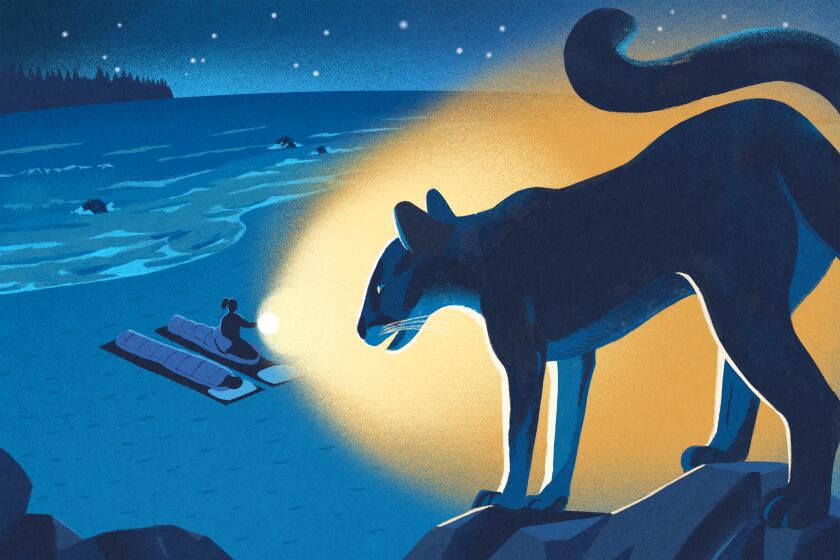Herding Tribesmen of Kenya Urged to Trade in Their Cattle : Camels May Help Halt the Spread of African Deserts
Researchers trying to halt the spread of Africa’s deserts are looking for help from one of the few creatures that thrive there: the camel.
The researchers maintain that camels gradually should replace cattle in areas threatened with becoming deserts because they are far less destructive to the environment during droughts and produce more milk.
“Historically, camels arrived in a region only after the desert was created,” said Daniel Stiles of Los Angeles, a Nairobi-based expert on expanding deserts. “Perhaps if the camel were to arrive before, the desert wouldn’t follow.”
Cattle expose the soil by eating grass and tearing the ground with their hoofs. Camels, however, have padded feet and eat mostly shrubs and tree leaves.
‘Animal of the Past’
Stiles, who works for the United Nations Environment Program, said that, within the agricultural establishment, “the prevalent attitude is that the camel is an animal of the past, that it belongs to primitive nomadic peoples who are almost prehistoric, and that eventually it will disappear or remain marginal.
“To me, that’s completely erroneous. To me, the camel is definitely an animal of the future. Only in the past decade has research shown how valuable the camel is.”
Much of the research is taking place in the semi-desert of northern Kenya, where the largest herding tribes have traditionally favored cattle, which are a measure of wealth in Africa. Kenya’s Agriculture Ministry, UNESCO and the West German and Norwegian governments are operating projects there to encourage wider use of camels.
Walter Lusigi, a Kenyan who is chief technical adviser to UNESCO’s Integrated Project on Arid Lands, said the camel appears to be the ideal animal for herdsmen in dry areas not yet overtaken by desert.
Camels Survived
When drought hit northern Kenya in 1984, he said, virtually all the camels survived, while in some areas half the goats and cattle died.
To Kenya’s Agriculture Ministry, the foremost goal of camel promotion is to protect livestock-dependent tribes from famine.
“When drought comes, cattle are the first to go,” said Sam Chema, the ministry’s chief veterinary research officer. “Our goal is to keep people alive.”
The camel promoters say their projects could be applied elsewhere in Africa as a buffer against famine and a step toward a regional solution to expanding deserts.
Stiles said that in the Sahel region along the southern edge of the Sahara Desert there has been scant interest in more camel-raising, despite a severe desert-expansion problem.
The main reason, he said, is that West African pastoralists view cattle as a source for meat and cash, not for milk, while East African herders consider milk the most important product of livestock.
Sparsely Populated
Stiles added that a zone of bush country, south of the Sahel and north of West Africa’s forest belt, is sparsely populated because livestock would be vulnerable to trypanosomiasis, a deadly disease carried by the tsetse fly.
“Eventually they will get the health problem cured, and people will invade from the Sahel,” Stiles said. “In 10 years, cattle will make it a desert unless we get people clued in to camels.”
Stiles, who has a doctorate in anthropology from the University of California, Berkeley, also said camels could prosper in dry areas of neighboring Tanzania and in southern African nations like Tanzania, Zimbabwe, Zambia and Angola.
500-Year Change
UNESCO’s research and the West German camel project focus on the Samburu tribe of north-central Kenya, which Lusigi said shifted from camels to cattle about 500 years ago.
“The Samburu are starting to adapt to camels again now, but they have to change quicker than they normally would,” Lusigi said. “Instead of 100 years, they are going to have to do that in 20 to 50 years. They need to be trained to adjust faster, to keep them from being famine victims.”
More to Read
Sign up for Essential California
The most important California stories and recommendations in your inbox every morning.
You may occasionally receive promotional content from the Los Angeles Times.










